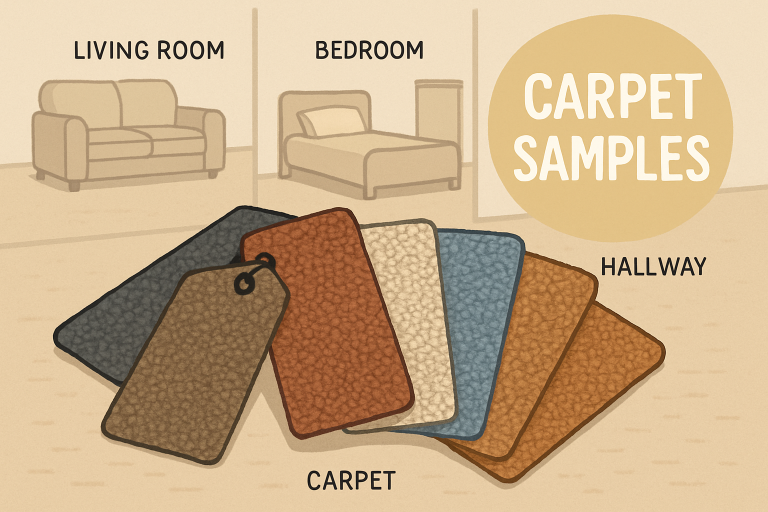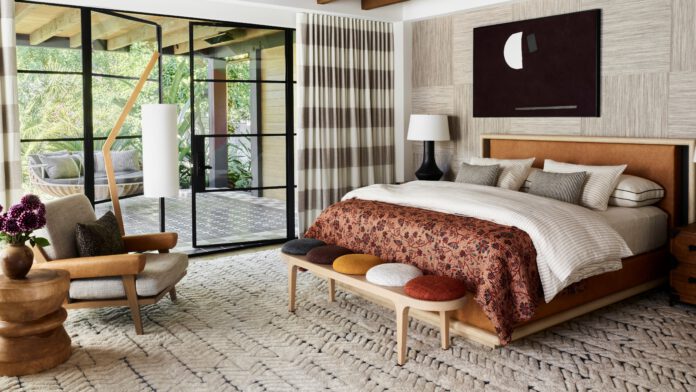Key Takeaways
- Each room has different requirements for carpet selection based on use and foot traffic.
- Factors such as material, pile height, and color impact comfort, durability, and aesthetics.
- Routine cleaning and care are essential for long-lasting, beautiful carpets.
Choosing the right carpet for your home involves more than just selecting a color and style; it also requires thinking about functionality, comfort, and durability. A carefully selected carpet can enhance your room’s atmosphere, add warmth to the floor, and enhance the overall look. If you’re searching for flooring carpet in Ogden, exploring local options can provide helpful inspiration and expert guidance. From cozy living rooms to peaceful bedrooms, every space in your home requires a carpet tailored to its purpose and ambiance. As trends change and families grow, selecting the right carpet becomes even more crucial for creating inviting, easy-to-maintain, and durable interiors. Focusing on the specific needs of each room, considering daily traffic, and aligning with your aesthetic goals will make choosing your carpet easier. By the end of this guide, you’ll know what to consider and how to select a carpet that combines beauty and practicality effortlessly.

Room-by-Room Considerations
No two rooms are quite the same, so evaluating each area’s function is crucial. High-traffic spaces, such as hallways, stairs, and living rooms, require robust, easy-to-clean carpet that resists stains and crushing. Look for materials known for their durability and resistance to stains.
In contrast, bedrooms and private retreats tend to see less foot traffic and are perfect for softer, more luxurious carpets. Opt for plush textures in areas where comfort is a top priority, and don’t forget to factor in exposure to sunlight or potential spills, which can impact the lifespan of your carpet.
Understanding Carpet Materials
Different carpet fibers come with distinct pros and cons. Understanding these will help you make the most appropriate selection for your lifestyle. For a deeper look into the various carpet materials, pile types, and textures available today, you can explore this detailed guide from Better Homes & Gardens.
- Nylon: Exceptionally resilient, stain-resistant, and ideal for busy households and high-traffic zones.
- Polyester: Vibrant in color, soft underfoot, and fades less over time. Best suited for quieter rooms with less activity.
- Wool: A premium natural choice, known for durability, softness, and insulation. Requires careful maintenance but offers excellent longevity for those seeking a luxury touch.
- Triexta and Olefin: More recently developed fibers, such as triexta, offer impressive stain resistance, while olefin is valued for its moisture resistance, making it suitable for basements or playrooms..
Pile Height and Texture
Pile height refers to how high the carpet’s fibers stand from the backing, while texture speaks to the weave or finish. Low-pile options, such as Berber or loop carpets, resist matting and are easy to vacuum, making them a practical choice for entryways and family rooms.
For a cozy bedroom or den, a high-pile or frieze carpet offers a cushioned, luxurious feel. However, these thick carpets require more frequent cleaning and may trap more allergens, so consider the trade-offs based on where you’re installing them.
Color Selection and Design
The right color can complement your décor and create the desired atmosphere in each room. Neutral tones, such as warm beige, soft gray, or taupe, offer flexibility for redecorating, while bold colors or striking patterns can energize a space or draw attention to an accent wall. For more detailed advice on choosing the perfect shade, visit The Spruce, a guide on selecting carpet colors. Consider the room’s lighting—lighter shades can make small spaces appear larger, while darker hues help conceal footprints and dirt in high-traffic areas. Always request carpet samples and view them in various lighting conditions before making your final decision.
Eco-Friendly and Sustainable Options
If sustainability matters to you, choose carpets made from natural or recycled materials. Wool and jute are popular eco-friendly options, and some manufacturers produce nylon and polyester carpets from recycled plastic bottles and post-consumer waste. Check for certifications like Green Label Plus, which ensure better indoor air quality and lower chemical emissions.
Maintenance and Care Tips
Routine care is essential for maintaining carpets in optimal condition. Regular vacuuming—especially in active areas—removes surface dirt and prevents fibers from matting. Address spills immediately to avoid stains, using carpet-safe cleaners or natural alternatives.
Schedule professional deep cleaning every 12 to 18 months or more frequently if you have pets or allergies. This keeps fibers fresh, restores color, and prolongs overall life. Using doormats at entryways and enforcing a “no shoes indoors” rule are small habits that can make a big impact.
Budgeting for Your Carpet Purchase
Carpet prices can vary widely depending on material, brand, and installation requirements. Set a clear budget before you start shopping, but keep in mind that a higher upfront investment in quality carpet can pay off with years of reliable performance and reduced need for early replacement.
Budget for padding and professional installation as well—these elements are key to achieving a plush, long-lasting result and may not be included in the per-square-foot carpet price quoted at the store.
Professional Installation vs. DIY
Proper installation is just as important as choosing the right carpet. While DIY installation can save on labor costs, the process requires specific tools, skills, and significant physical effort. Mistakes in measuring, cutting, or seam joining can undermine both durability and visual appeal.
Professional installers ensure a precise fit, expert stretching, and securely finished edges, providing peace of mind and protecting your investment. If you’re unsure, obtaining a quote for professional work helps you weigh the cost against convenience and longevity.
By thoughtfully considering each step—from selecting the right fiber to envisioning your room’s atmosphere and budgeting for expert installation—you’ll create a home that is stylish, resilient, and welcoming for years to come.

